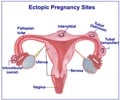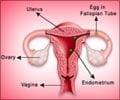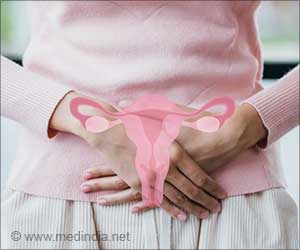A key contributor in the development of pre-eclampsia in pregnant women has been identified by researchers at Wake Forest University School of Medicine.
A key contributor in the development of pre-eclampsia in pregnant women has been identified by researchers at Wake Forest University School of Medicine. Pre-eclampsia a condition that can result in miscarriage and maternal death.
The researchers in the study focused on identifying the differences in the uteri of pregnant women with and without preeclampsia and how the mother's tissues vary from the immediately adjacent foetus' tissue in preeclamptic women."Preeclampsia is a very serious condition that affects 7 to 10 percent of all pregnancies in the United States. It can be devastating to both mother and baby, and currently there is no cure except to deliver the fetus. Our finding brings us one step closer to understanding the condition by getting a picture of what is happening at the maternal and fetal interface," said Dr. K. Bridget Brosnihan, the lead investigator for the study.
Preeclampsia is a rapidly progressive condition that impacts multiple body systems, causing high blood pressure, decreased liver function and, in the most severe cases, affecting the activity of the brain, resulting in seizures.
If left untreated, preeclampsia can lead to serious, even fatal, complications for both mother and baby.
Despite numerous studies, researchers have only closed down on one possible pathway-the renin-angiotensin system (RAS), which regulates blood pressure and fluid retention.
The RAS, when operating normally, forms a hormone called angiotensin II- a potent vasoconstrictor that binds to angiotensin II receptors throughout the body, including in the maternal uterine "bed" and the fetal placenta.
Advertisement
In normal pregnancy, the uterus has lower RAS activity, producing less angiotensin II, which results in the blood vessels remaining dilated.
Advertisement
However, in preeclamptic women, the activity of the RAS is increased in the uterus, yet the mother's vessels remain dilated and the fetus' vessels constrict more than normal.
Brosnihan and colleagues focused on uncovering the reason for this in the current study and found that the angiotensin II receptors are not detectable in the uteri of pregnant or preeclamptic women.
In normal pregnancy, this does not present a problem because there is less angiotensin II being produced, making the receptors less important.
However, in preeclamptic women, where uterine angiotensin II is high, the hormone does not bind to its receptors in the uterus as it should.
Instead, it passes through to the vessels of the foetal placenta and constricts the foetus' vessels, limiting the foetus' oxygen and nutrient intake and often causing low birth weight.
The only known way to cure preeclampsia is delivery of the baby.
Inhibitors of the RAS are known to have bad effects on the foetus, so controlling the system is difficult in preeclamptic women, said Brosnihan.
"It is very hard to control parts of this system to prevent preeclampsia without hurting the baby. Our study provides some insight into maternal factors that may augment the disease. Hopefully, one day, we will be closer to finding a cure," said Brosnihan.
The study has been published in the September issue of Endocrinology.
Source-ANI
RAS










